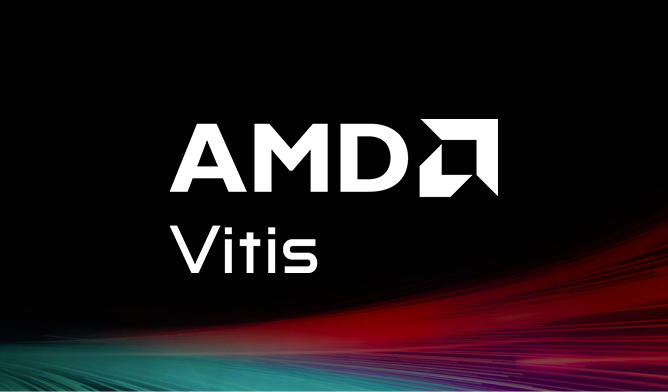The Developer’s Guide to Blockchain Development
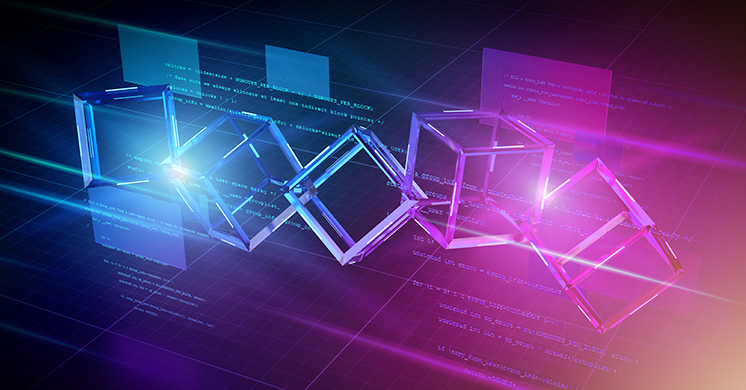
In recent years, “blockchain” has become a buzzword among developers and businesses looking to streamline operations, ensure security, and improve visibility. But the concept has also sometimes fallen victim to the game of telephone, with many misunderstanding its real-world benefits, use cases, and implementation requirements.
Here, we’ll dive into what blockchain is, benefits of blockchain development, how to create a blockchain solution, and more.
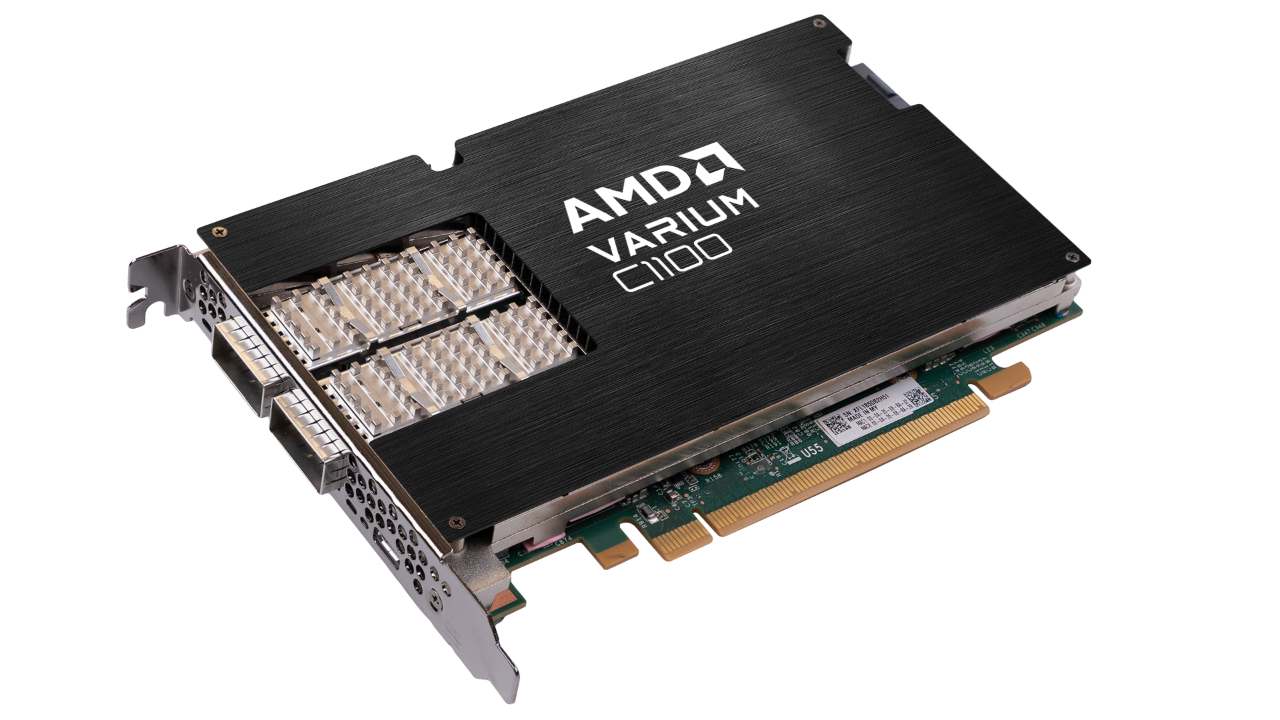
Blockchain Acceleration
The Varium C1100 Blockchain Accelerator Card delivers maximum performance with the lowest power consumption possible. It includes a large FPGA fabric to take your blockchain solution to the next level. Fully customizable to accelerate your application with minimal disruption.
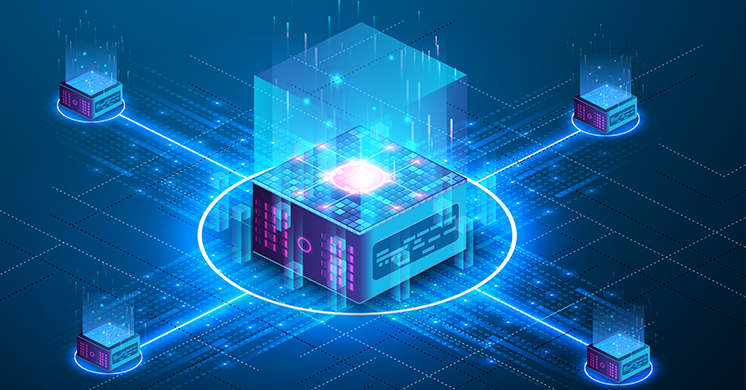
What Is Blockchain Development?
Blockchain development is the process of creating shared, unchangeable, distributed ledger technology (DLT) that securely records transactions and tracks assets—whether those are physical assets, like money or real estate, or nonphysical assets, like copyrights—within a network.
It’s valuable for a variety of industries because of how quickly, accurately, and securely it enables the sharing of information. Whether you’re tracking orders, accounts, payments, production, or other data, a blockchain network offers transparent delivery and storage for permissioned network members.
Blockchain development can result in many benefits, but before taking advantage of its potential value, you need to understand blockchain.
What Is Blockchain?
Generally speaking, a blockchain is a fixed, digital ledger that uses cryptography to record transactions and tracks assets, both tangible and intangible, among a distributed, peer-to-peer computer network. Those transactions, known as blocks, are then recorded, copied, and stored on each server, called a node, that’s linked to the network.
Unlike typical databases that store records in a centralized fashion (i.e., records are stored at a single location), a blockchain is essentially a decentralized database that multiple participants manage; its DLT provides each node in the network with its own copy of the ledger. (And anyone can volunteer their server to be a node in the network.) If there’s inconsistency in any record, the technology can identify it by verifying it against the other participants’ copies of the record. This capability makes records in a blockchain virtually tamperproof.
Blockchain’s real-time updates provide a single source of truth for all members who access it, meaning every detail is precise and reliable.
How Blockchain Works
Organizations can use blockchain to track and trade nearly anything—without the risk of duplicate records or data falsification. Here’s how it works:
- Create a block. A transaction occurs and is transmitted to the distributed network of nodes. Each of the nodes in the network must verify the transaction, and if there’s a consensus, they approve the transaction and all of its corresponding data gets recorded in a block. (You can choose the information for your block to record—names, places, times, cost, or any other type of data.)
- Link blocks. Each block in the database only stores a certain amount of data. Once it’s full, a new block is generated. To link back to the previous block, that newly generated block uses a unique code called a hash. If the transaction is changed in any way, the hash also changes—which makes it easy to spot tampering. This linkage forms a data chain, which shows how the asset moves (either in terms of literal location or ownership).
- Add to the chain. All transactions are blocked together in a completely fixed fashion to form a blockchain. Every time a block is added to the chain, the network uses the same consensus approach to further confirm the previous block(s) and thus adds validity to the overall blockchain. This process is incredibly secure and prevents fraudulent behavior, so each network member can rest easy knowing the ledger of transactions is accurate.

History of Blockchain: Not Just for Bitcoin
It’s important to know that blockchain is not synonymous with the cryptocurrency Bitcoin. People tend to use the two terms interchangeably because blockchain’s first application was Bitcoin generation, but, in reality, the technology has a myriad of applications.
Although blockchain technology is great for recording cryptocurrency transactions, it’s also widely used to track other assets, as well. When businesses started to realize this, they began investing in blockchain as a solution for streamlining operations, breaking down data silos, improving transparency, and reducing transaction costs. Today, a wide variety of industries utilize blockchain technology to boost their bottom line.

Blockchain Use Cases
Many different sectors can gain operational efficiency and a competitive advantage from investing in blockchain development, including:
Healthcare - Secure records of patient data; enhanced trust in the clinical research process
Real estate - Accurate records of land and property ownership
Finance - Global payment, tax, and intermediary cost reduction; money laundering protection
- Voting - Prevention of ballot duplication to ensure accuracy
- Supply chain - Accurate tracking of assets from vendors to customers
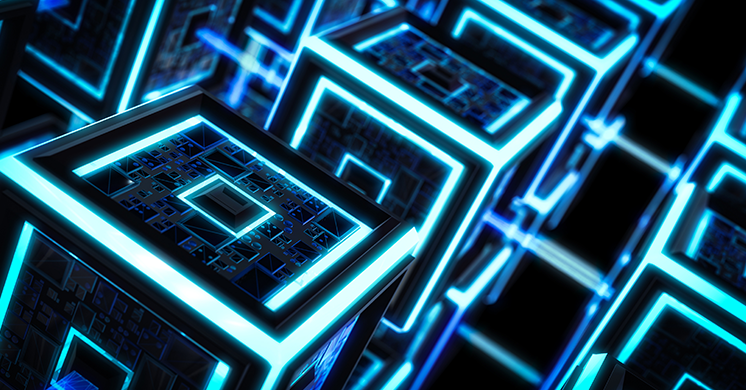
Benefits of Implementing Blockchain Solutions
Both organizations and the individual developers working for them can realize the following benefits from implementing enterprise blockchain solutions:
- Increased transparency - As transactions occur, the network must validate it, meaning everyone must agree that the information tied to the transaction, particularly the hash, is correct and, therefore, the transaction is valid. Thus, the overall history of each transaction within the distributed ledger is visible by all members of the network. Any single change within the record, then, results in a modification of all subsequent records, so information is always accurate, secure, and transparent to every member.
- Reduced risk of fraud - No matter what a company trades or sells, transactional history can be complicated—particularly if an asset changes hands or locations frequently. When everything is recorded on a blockchain, you instantly have access to a complete audit trail that sheds light on an asset’s history. Each previous, unchangeable record of transaction on the blockchain prevents fraudulent behavior and validates authenticity.
- Increased speed and efficiency - If you’re still managing transactional records through outdated, manual methods (e.g., paper documents, spreadsheets, or third-party systems), you’re likely wasting precious time that you could otherwise spend on higher-value tasks. Such traditional processes are error-prone and require time-consuming duplication efforts to ensure accuracy. Blockchain automates and simplifies the process, eliminating workflow bottlenecks and ensuring everyone is working from the same, up-to-date ledger.
- Decreased costs - Reducing unnecessary spend can enable faster growth and enhance your bottom line. Blockchain eliminates the need for other third-party intermediaries, without sacrificing trust and accuracy. Network members verify everything through consensus, so you don’t need to spend valuable time reviewing trade documentation.

Blockchain Development Challenges
As the blockchain ecosystem evolves and different use cases emerge, there are three main challenges that blockchain developers must face: security, scalability, and decentralization. Otherwise known as “the blockchain trilemma,” developers are tasked with finding ways to address these challenges without risking trade-offs.
Decentralization
Decentralization is one of the main reasons why industries use blockchain. In the world of finance, for example, blockchain solutions allow customers to store and purchase cryptocurrency without the need to give full control of their assets to banks. Instead, transactions are verified by consensus (a group of notes instead of one individual node). Once these transactions are verified, they can’t be altered.
The trade-off of decentralization is the amount of time it takes for multiple confirmations to reach a consensus. Finding a way to speed up this process is a challenge facing blockchain developers.
Scalability
Global adoption of blockchain hinges on its ability to handle a growing number of transactions as demand increases—all while operating as expected and defending itself from cyberattacks. Once again, speed is a trade-off, especially as block sizes grow.
Bitcoin originally imposed a cap of 1 megabyte on its blocks in an effort to reduce the risk of cyber threats. However, each coin is capable of recording an infinite number of transactions, with each transaction increasing the size of each block. As a result, blocks could eventually exceed any size limitations imposed on them, further hindering processing speed.
Although Bitcoin initiated the block-size debate, all blockchain applications will be affected as developers decide whether to increase block size without sacrificing speed.
Security
Although security is one of the benefits of blockchain development is also a challenge for developers. Because people see blockchain as such a secure technology, it is also a target for cybercriminals. Anything that jeopardizes the security of blockchain will cause a ripple effect, jeopardizing decentralization and scalability. And without regulatory oversight, there’s no centralized party to intervene in the event of a security breach.
Although security breaches are rare in blockchain, people have manipulated known vulnerabilities in its infrastructure. Developers need to be able to create blockchain networks that not only add business value, but also assure complete security.
While there are challenges associated with developing a blockchain solution, it’s important to remember that it’s still in its infancy. Technology is constantly improving, making a good use case for blockchain development overall.

How to Recognize When to Implement Blockchain Development
While blockchain certainly boasts many benefits, it’s crucial to note that it isn’t a silver bullet for every organization or platform. There are some critical questions that you should always ask before determining whether blockchain development is the right fit:
Do you need a place to store data? If so, you may not need to jump the gun on implementing blockchain. First, take a look at how much data you’re actually looking to store. For example, if you run a small business, it’s likely not worth the investment, and you can manage by just storing data locally. On the other hand, if you have an enterprise-scale operation that requires mass data storage, maintenance of multiple databases, and access for many users, blockchain can give you a fully transparent, up-to-date ledger that’s easy for everyone to work from.
Does your data need to be frequently updated and shared? Blockchain development can reduce the time-consuming processes associated with manual and paper-based data maintenance. Suppose ever-changing, historical-based data is fundamental to your business. In that case, you might need a blockchain solution that automates the process, allows for multiple entries from a variety of permitted members, and prevents data modification.
Is your business suffering from slow transactional speeds? While blockchain can remove barriers that can slow down certain workflows, it doesn’t generally offer great speed at the transactional level without an accelerator. If transactional speed isn’t a priority and you’re instead focused on application security, a blockchain solution is the better fit.
Do you need third-party authorization? Some businesses require an intermediary for data control and authentication. For those, blockchain won’t make sense. But for businesses that operate without a third-party solution, blockchain can provide total transparency and consensus validation. It also reduces the costs and delays that result from using an intermediary for transactions.
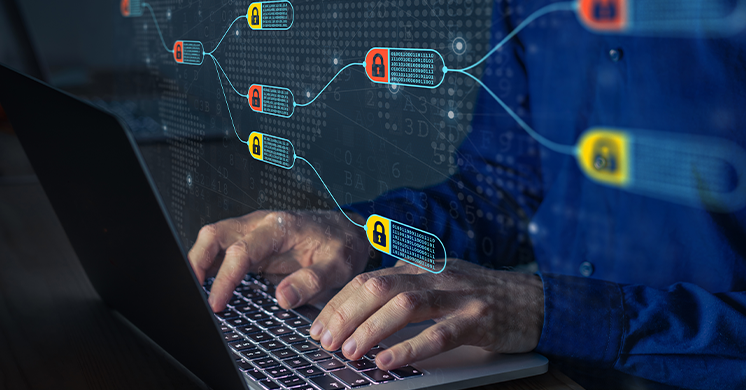
Steps to Develop a Blockchain Solution from Scratch
Building a blockchain solution is a time- and research-intensive project, and one that’s highly dependent on your distinct business. But regardless of your needs or objectives, you’ll need to follow some key steps for development.
Step 1: Identify a Problem to Solve
It’s easy to get caught up in all the benefits that a blockchain solution can offer. But remember: It’s not a one-size-fits-all answer. You should first hammer down exactly what you’re trying to accomplish. Take a look at your overall business needs and closely compare them to the high-level use cases of blockchain development that we’ve explained in detail above.
It can be helpful to clearly develop a problem statement, which should outline all of the challenges you’re looking to solve. Double-check that a blockchain solution is actually capable of solving these issues. Then, decide whether you’ll need to migrate your current solution to a blockchain application or build an application from the ground up.
Step 2: Draft Your Business Requirements
Next, you’ll need to draft your business requirements to make sure nothing falls through the cracks. Consider which technologies you’ll need both on-chain and off-chain for a complete ecosystem. You can use these details to create a more tangible product roadmap, which will help keep you on track for deadlines and help you understand resource requirements.
Step 3: Identify a Consensus Mechanism
The next step is to identify a consensus mechanism—a type of methodology used to achieve trust, security, and agreement among a decentralized computer network. There are many consensus mechanisms from which you can choose, but some of the most popular ones today include:
Proof of work
Proof of stake
Byzantine fault-tolerant
Deposit-based consensus
Proof of elapsed time
Your consensus mechanism is highly dependent on your unique business needs and objectives, so make sure you take the time to look into each and determine the best fit for you.
Step 4: Choose the Best Blockchain Platform
The choice of platform for your blockchain application will influence the skill set you’ll need from your development team, so it’s important that you get it right. The whole process takes quite a bit of research and time for proper development, so make sure you choose the platform that best aligns with your business needs.
When evaluating your options, consider the problems you’re looking to solve, consensus mechanisms, cost, developer requirements, and expected timeline.
Step 5: Design Your Blockchain Nodes
It’s crucial to determine whether you’ll need a permissioned or permissionless blockchain network, which programming languages you’ll use, and any other elements that may affect development. Do you need a private, public, or hybrid solution to meet your business needs? Will the blockchain nodes run on the cloud, on-premises, or both? Which operating system will your application run on (e.g., Ubuntu, CentOS, Debian, Windows, or Red Hat)? There are a lot of factors at play in this step, so make sure you research all of your options and measure them against your objectives, available resources, and budget.
Step 6: Plan Your Blockchain Configuration
For the majority of blockchain platforms, you’ll need to plan for a variety of configuration elements, including:
Permissions
Asset issuance
Asset re-issuance
Atomic exchanges
Key management
Multi-signatures
- Parameters
Native assets
Address formats
Key formats
Block signatures
Hand-shaking
Keep in mind that you can modify some of these elements at run-time. Nonetheless, it’s always best to plan ahead to ensure successful development.
Step 7: Build Your APIs
While some platforms include pre-made application programming interfaces (APIs), others do not. Depending on your needs, you may need to build APIs for:
Generation of key pairs and addresses
Performance of audit-related functions
Data authentication (through digital signatures and hashes)
Data storage and retrieval
Smart-asset lifecycle management
Smart contracts
Step 8: Design the User Interface
Once you’ve planned the entire app, you can start designing the user interface (UI) for each software component. The APIs you’ve designed will integrate with UIs on the back-end: Visual designs affect the app’s overall look, and technical designs impact the app’s architecture.
Step 9: Choose an Accelerator to Optimize Your Blockchain Application
Now that you’ve built your blockchain app, how do you know its deployment will be a success? Compute-intensive blockchain applications need a hardware accelerator to enhance performance, provide flexibility, and provide efficient use of power.
Accelerators also help optimize individual components of blockchain, such as transaction validation, governance, and data storage. They’re essential for saving both time and storage space, as they distribute transaction loads among several components to increase both transactional speed and output.
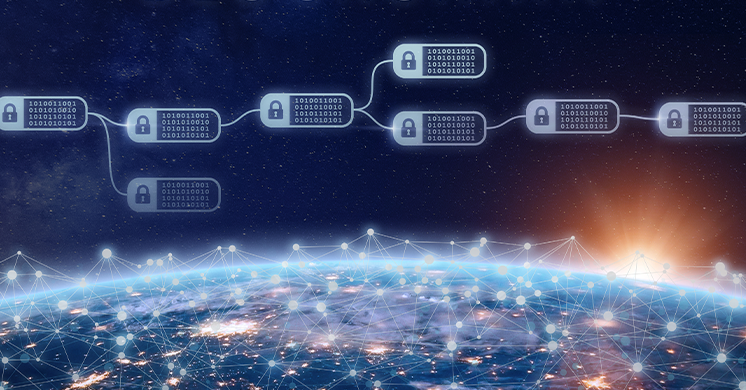
Rely on FPGA Blockchain Acceleration for Optimal Performance
Blockchain development is a highly valuable investment, but only for businesses whose challenges can be mitigated by its promised features and functionality. When implemented correctly, a blockchain solution can provide unparalleled transparency, operational efficiency, and reduced costs. But using the right technology in tandem with that solution is essential for getting the most from your investment.
The Varium C1100 Blockchain Accelerator Card delivers maximum performance with the lowest power consumption possible. It includes a large FPGA fabric to take your blockchain solution to the next level. Fully customizable to accelerate your application with minimal disruption.
Additionally, the Vitis™ unified software platform, combined with readily available FPGA acceleration boards in the cloud, makes it easier than ever to use FPGA technology to accelerate blockchain algorithms.

